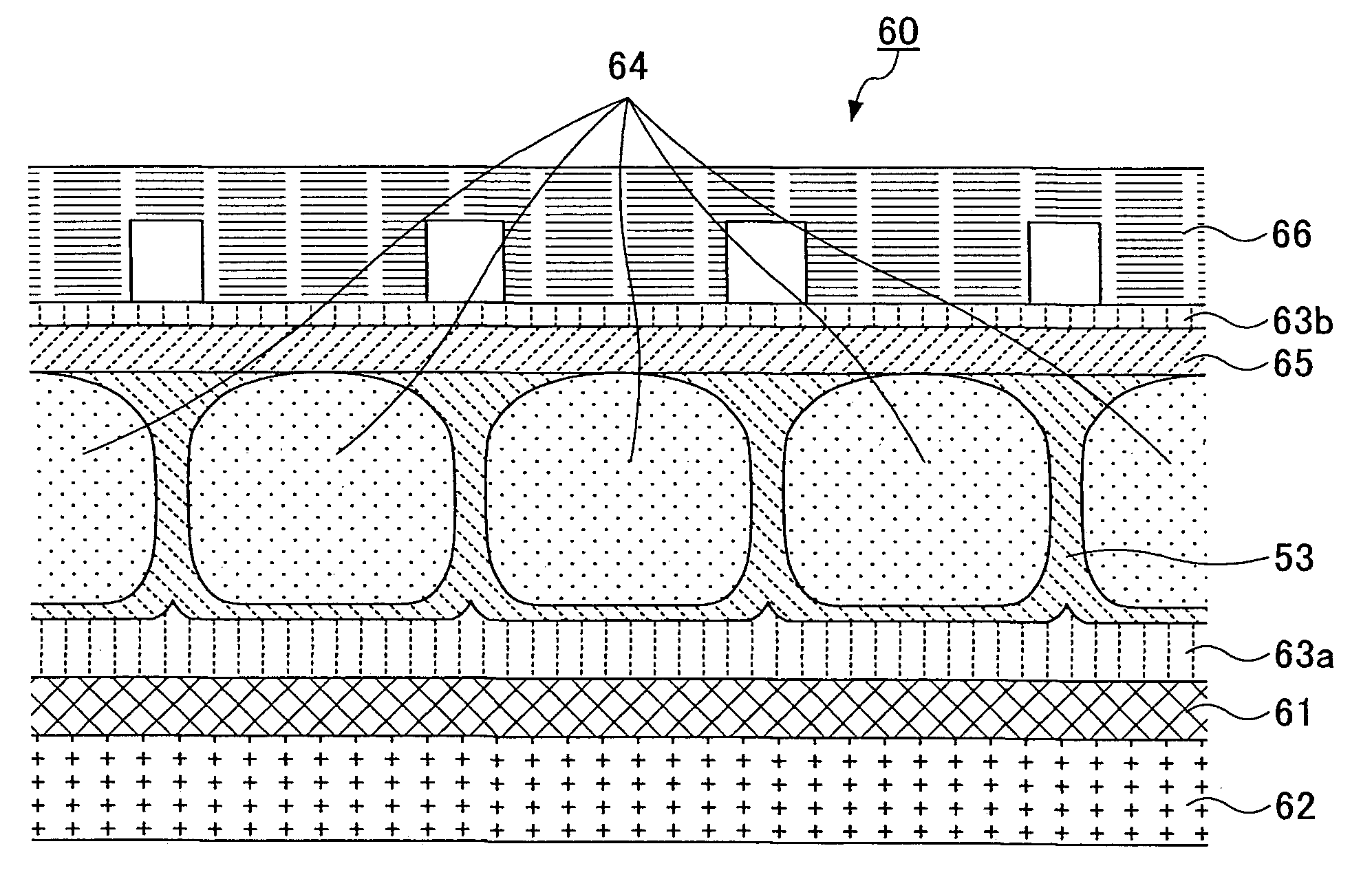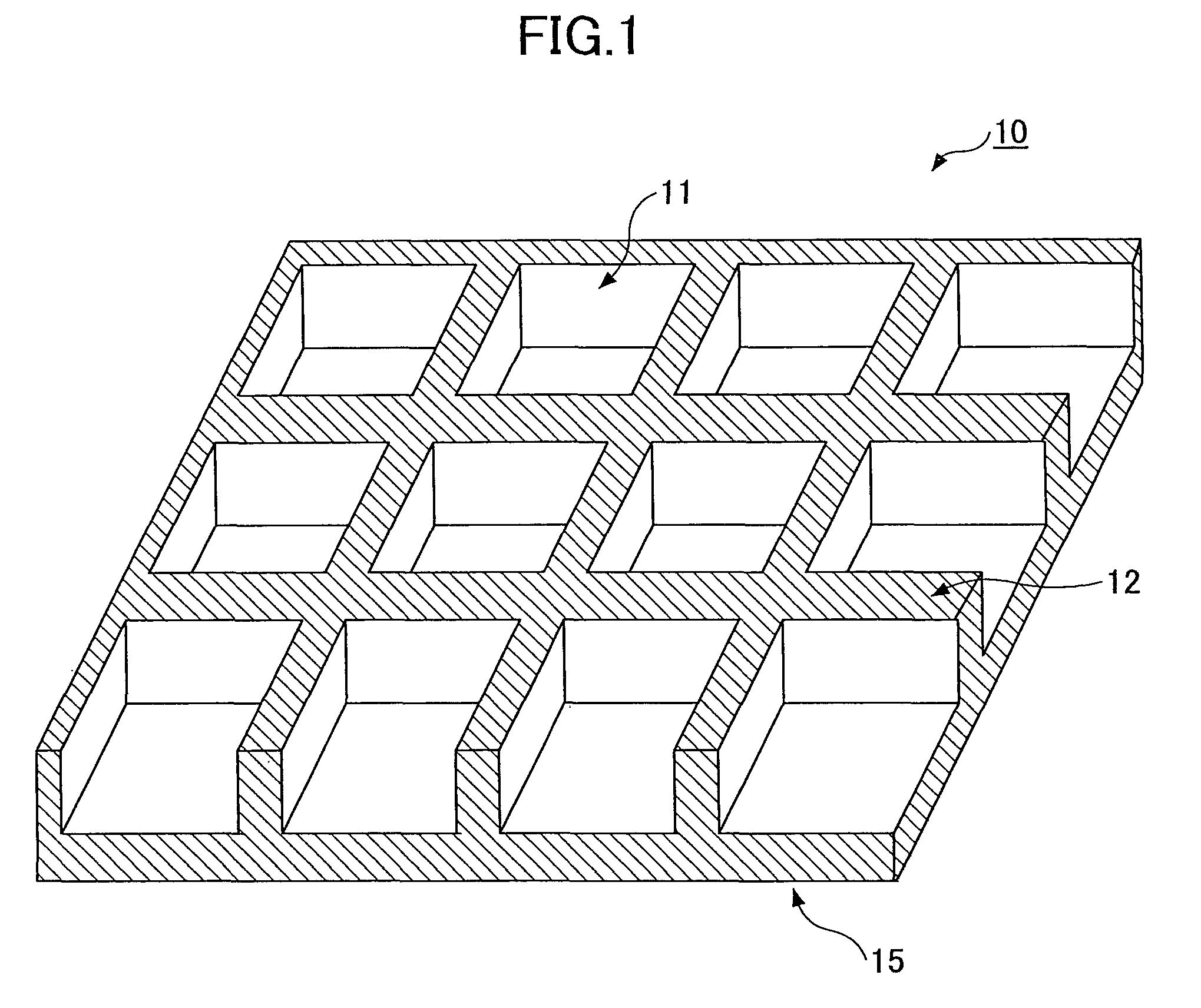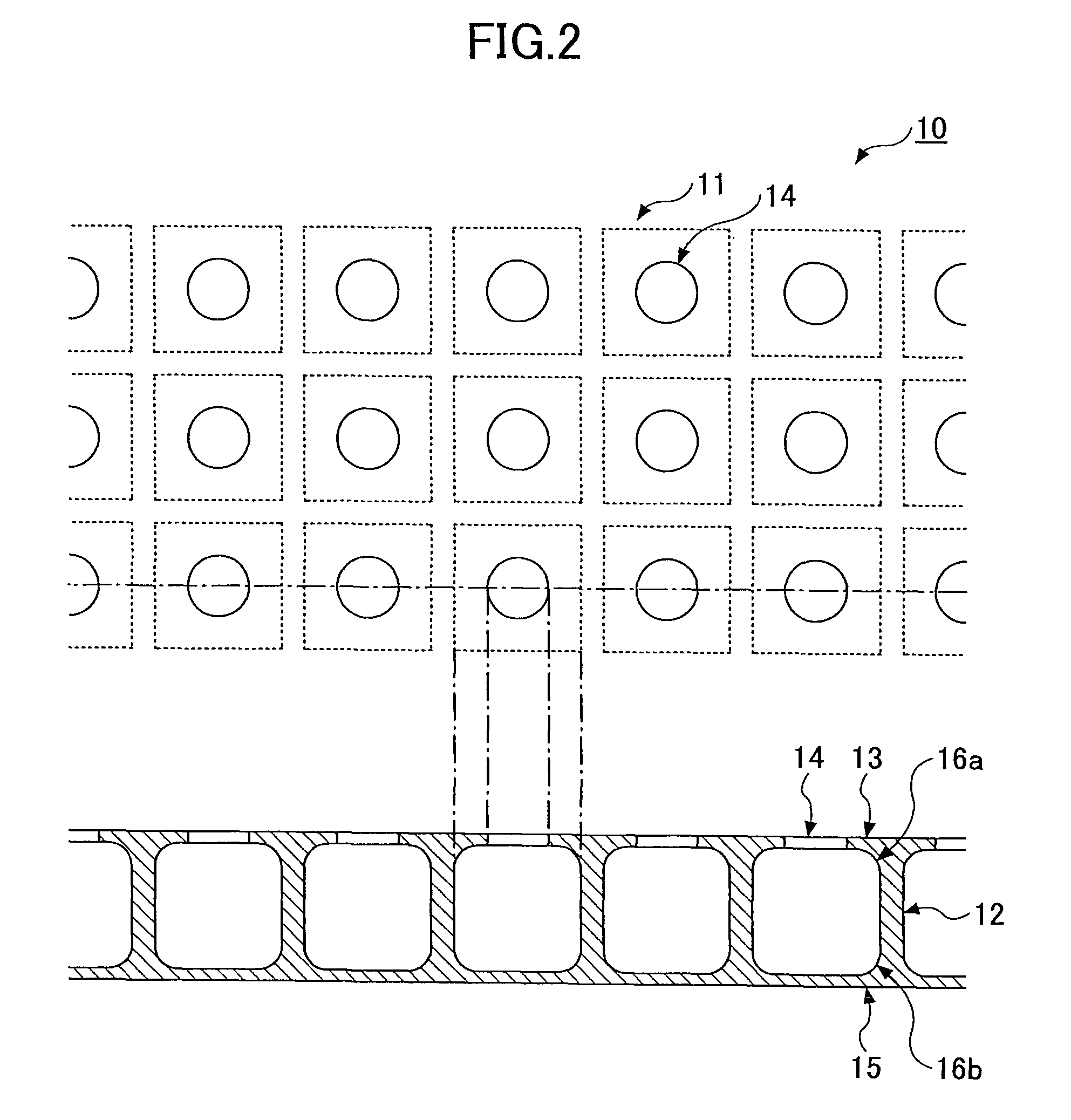Display element, image display device, and image display system
a display element and image technology, applied in the field of display elements, can solve the problems of reducing the thickness of the cell wall separating adjacent cells, reducing display properties such as lower reflectance and contrast, and reducing the thickness of the bottom wall of the cells, so as to achieve the effect of improving display properties and strength, reducing the thickness of the cell wall, and sufficient strength
- Summary
- Abstract
- Description
- Claims
- Application Information
AI Technical Summary
Benefits of technology
Problems solved by technology
Method used
Image
Examples
example 1
[0087]An image display device 60 shown in FIG. 9 was manufactured. A hollow structure used was one of the hollow structures 53 (see FIGS. 3 and 4) of Manufacture Examples 1-5, which includes plural cells disposed in a plane. Each of the cells has an opening. In the hollow structure 53, the thickness of the cell wall was 2 μm; the thickness of each of the upper and lower walls was 1 μm; the depth of each cell was 50 μm; the cell-to-cell pitch was 150 μm; and joint portions of the upper and lower walls with the cell wall had curved cross-sectional shapes of a 5 μm curvature radius.
[0088]In the image display device 60, the lower wall of the hollow structure 53 is bonded by an adhesive layer 63a to a PET film 62 with an ITO layer 61 formed thereon. An ultraviolet curing adhesive, an epoxy-based adhesive, or other suitable adhesives may be used for bonding. This structure can be obtained by bonding the PET film 62 with the ITO layer 61 formed thereon onto the hollow structure 53 (see FIG...
example 2
[0091]An image display device 70 shown in FIG. 10 was manufactured. A hollow structure used was one of the hollow structures 53 (see FIGS. 3 and 4) of Manufacture Examples 1-5, which includes plural cells disposed in a plane. Each of the cells has an opening. In the hollow structure 53, the thickness of the cell wall was 2 μm; the thickness of each of the upper and lower walls was 1 μm; the depth of each cell was 50 μm; the cell-to-cell pitch was 150 μm; and joint portions of the upper and lower walls with the cell wall had curved cross-sectional shapes of a 5 μm curvature radius.
[0092]In the image display device 70, the lower wall of the hollow structure 53 is bonded by an adhesive layer 63a to a voltage drive circuit 66. An ultraviolet curing adhesive, an epoxy-based adhesive, or other suitable adhesives may be used for bonding. This structure can be obtained by bonding the voltage drive circuit 66 onto the hollow structure 53 (see FIG. 7C) and then separating the hollow structure...
example 3
[0095]An image display device 80 shown in FIG. 11 was manufactured. A hollow structure used was one of the hollow structures 53 (see FIGS. 6 and 4) of Manufacture Examples 1-5, which includes plural cells disposed in a plane. Each cell has opposite openings. In the hollow structure 53, the thickness of the cell wall was 2 μm; the thickness of each of the upper and lower walls was 1 μm; the depth of each cell was 50 μm; the cell-to-cell pitch was 150 μm; and joint portions of the upper and lower walls with the cell wall had curved cross-sectional shapes of a 5 μm curvature radius.
[0096]In the image display device 80, the lower wall of the hollow structure 53 is bonded by an adhesive layer 63a to a voltage drive circuit 66. An ultraviolet curing adhesive, an epoxy-based adhesive, or other suitable adhesives may be used for bonding. This structure can be obtained by bonding the voltage drive circuit 66 onto the hollow structure 53 (see FIG. 7C) and then separating the hollow structure ...
PUM
| Property | Measurement | Unit |
|---|---|---|
| thickness | aaaaa | aaaaa |
| thickness | aaaaa | aaaaa |
| curvature radius | aaaaa | aaaaa |
Abstract
Description
Claims
Application Information
 Login to View More
Login to View More - R&D
- Intellectual Property
- Life Sciences
- Materials
- Tech Scout
- Unparalleled Data Quality
- Higher Quality Content
- 60% Fewer Hallucinations
Browse by: Latest US Patents, China's latest patents, Technical Efficacy Thesaurus, Application Domain, Technology Topic, Popular Technical Reports.
© 2025 PatSnap. All rights reserved.Legal|Privacy policy|Modern Slavery Act Transparency Statement|Sitemap|About US| Contact US: help@patsnap.com



